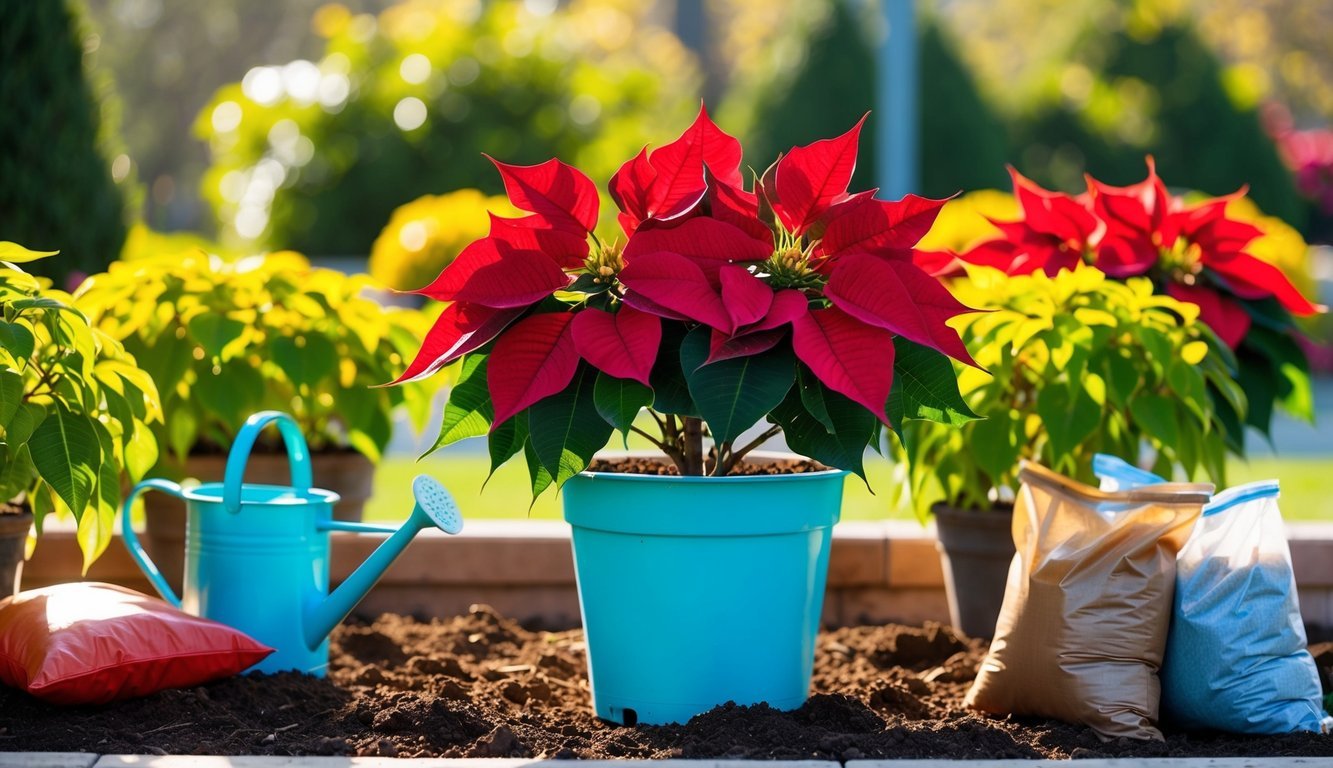
Once the holiday celebrations wind down, many of us notice our once-vibrant poinsettias starting to fade.
As these tropical beauties transition into their natural growth cycle, they enter a time of rest.
However, with the right care, you can keep your poinsettia thriving, whether as a lively houseplant or a garden specimen in warmer climates.
If you’re eager to maintain its brilliance, garden expert Katherine Rowe shares her top tips for extended care.
Poinsettias, scientifically known as Euphorbia pulcherrima, have a rich history dating back to ancient Aztec culture and are native to Mexico and Central America.
In their wild form, they can grow up to 15 feet tall! The compact versions we now adore during the holidays come in an exquisite array of colors and patterns—bright reds, elegant whites, soft pinks, and even shades of gold.
They bear delightful names like ‘Jingle Bells,’ ‘Peppermint Ruffles,’ and ‘Plum Pudding,’ as well as more refined varieties such as ‘Autumn Leaves,’ ‘Lemon Glow,’ and ‘Candy Wintergreen.’
Caring for Your Poinsettia After Blooming
Poinsettias typically showcase their showy bracts from November to January.
After this period, these colorful bracts will begin to wilt and drop, signaling that the plant is entering dormancy.
With proper care, your poinsettia can rebound from this rest phase, with new growth popping up as spring arrives.
Pruning during this time is crucial for encouraging fuller growth in the following season.
Without a good cutback, your plant may grow leggy and sparse.
For the most effective results, focus on trimming in March and April.
When cutting back, aim to reduce the stems by about half and cut just above the leaf nodes to promote fresh growth.
To further promote bushiness, pinch back the stem tips in early summer—this encourages side branching and leads to a more plentiful bloom in the long run.
A second pinching can also be performed in late summer.
Watering Techniques for Optimal Health
Watering your poinsettia requires a careful balance.
These plants prefer to dry out slightly between waterings.
An easy way to gauge when to water is to check the top two inches of soil.
If it feels dry, it’s time to water.
Generally, a weekly watering schedule works well, though this can vary based on environmental factors.
Be cautious not to overwater, as too much moisture can lead to root rot and other issues.
It’s important to provide deep watering until the excess drains from the bottom of the pot, ensuring healthy roots.
If you’re using decorative pots, always remove them for adequate drainage after watering.
During dormancy, scale back on watering while still monitoring soil moisture levels.
Preparing for Fall and Winter
As you prepare to help your poinsettia showcase its stunning bracts, keep these critical steps in mind:
- Make a final round of pinching back growth tips in early September.
- Bring the plants indoors when temperatures hit around 50°F (10°C).
- Ensure they receive at least 12 hours of darkness daily for up to eight weeks.
- Continue to water as the top two inches of soil dries out, ensuring thorough drainage.
- Keep them shielded from extreme heat or cold drafts.
By following these guidelines, your poinsettia will reward you with vibrant blooms come November and December.
With a little effort, you can enjoy its beauty long after the holiday season!
Source: Epicgardening

